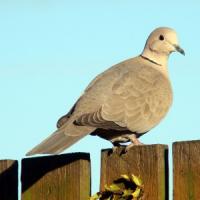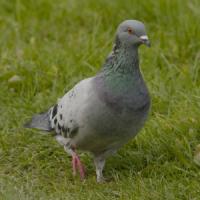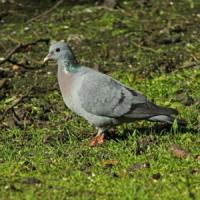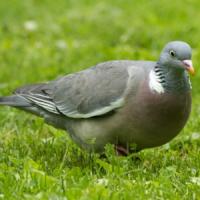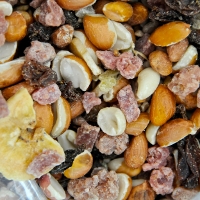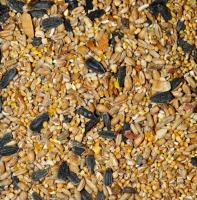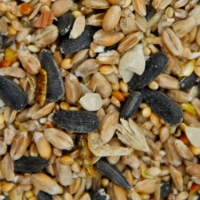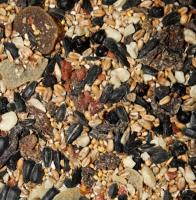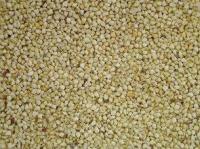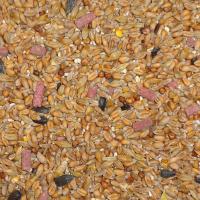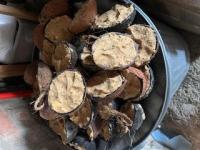- Home
- FAQs
- Customer Video Gallery
- Customer Photo Gallery
- Bird Facts
- Bird Food Blog
- Bird Information
- Feeding Advice
- Small Animal Information
- A to Z of Guinea Pigs
- A to Z of Hamsters
- A to Z of Rabbits
- Basic Care for Guinea Pigs
- Basic Care for Hamsters
- Basic Care for Rabbits
- Basic care for Chinchillas
- Basic care for Ferrets
- Basic care for Gerbils
- Basic care for Mice
- Basic care for Rats
- Buying a Healthy Small Animal
- Does your Reptile need a Licence
- Equipment for Ferrets
- Equipment for Hamsters
- Equipment for Mice
- Equipment for your Chinchilla
- Equipment for your Gerbil
- Equipment for your Guinea Pig
- Equipment for your Rabbit
- Keeping a House Rabbit
- Dog Information
- Cat Information
- Customer Information
- Fat Balls
- Suet Pellets
- Straights
- Seed Mixes
- Suet Treats
- Mealworms
- Bird Feeders
- My Account
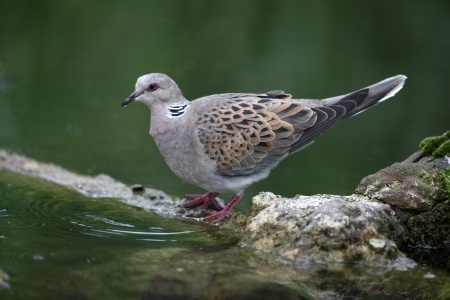
| Scientific Name | Streptopelia turtur |
| Breeding | April-May |
| Fledge Days | 19-21 |
| Incubation Days | 13-14 |
| Lifespan | 2 years |
| Number of Clutches | 2-3 |
| Number of Eggs | 2 |
| Size | 27cm |
| Weight | 140g |
| Wingspan | 50cm |
Bird Family : Pigeons and Doves
Turtle Dove Facts - Information About Turtle Dove
(European) Turtle Dove - Streptoelia turtur
The Turtle Dove has had a really bad time in recent years, so bad that there has been a decline of at least 80% - 85% since the mid 90’s. This year (2013) the story hasn’t improved with further reductions in numbers, this could be due to last years very wet summer and also hunting on the Doves migration routes. If you see a Turtle Dove in your garden you are very lucky and can report your sightings to us, we will pass these on to a national data base that is monitoring the Turtle Doves population. Decreasing throughout the UK.
Identification:
Adult
- The Turtle Dove is a Summer Migrant, it is slightly smaller than our resident Collared Dove.
- Sexes are identical, juveniles lack neck patches.
- Could be confused with Collared Dove which is larger and essential pale buffy grey all over.
- The Turtle Dove is a beautiful dove - tail is shorter and darker than Collared's with white sides, broken white terminal band with inner border black.
- Centre of tail is grey, this runs up the doves back, mantle and onto the head, getting paler as it travels up.
- The wings are chequered and spangled with dark centres and orangey –brown edges to the feathers.
- The head is pale grey, eye is red and surrounded pinky red bare skin eye ring.
- The neck shows a patch of black and white stripes, quite different to the single bar of the Collared Dove.
- The throat and breast is a very pale apricot and belly is white.
- The Collared Dove shows an incomplete black collar which runs around the back of the neck, this is bordered thinly with white.
- The undertail coverts are white and from below the tail appears white apart from a dark grey base.
- Bill black and dainty, legs dark pink and eye orange-red with dark pink bare skin eye ring.
Juvenile
- Juveniles appear from early June onwards and are similar to adults.
- Young birds lack the black and white neck patch and appear much greyer than the adults, thay lack the orange-brown edges to the wing feathers.
Status and Distribution
The Turtle Dove is declining rapidly; there may be fewer than 400 pairs this year, 2013. The greatest populations are in the south of the country.
They are a Summer Migrant, arriving in Mid May.
Habitat/Food
Turtle Doves occur in deciduous woodland, much shyer than Collared Dove and far less common. The Turtle Dove spends much of its time hidden in the high canopy..
Turtle Doves will take Seed Mixes in the garden but, as you can see, you’ll be very privalidged if you do.
Please record sightings.
Song/Call
The song is a soft purring, from which the bird gets its name……..’tuurrr tuurrrr tuurrrr’ as in Turrrrrtle Dove!
The following food is favoured by Turtle Dove




